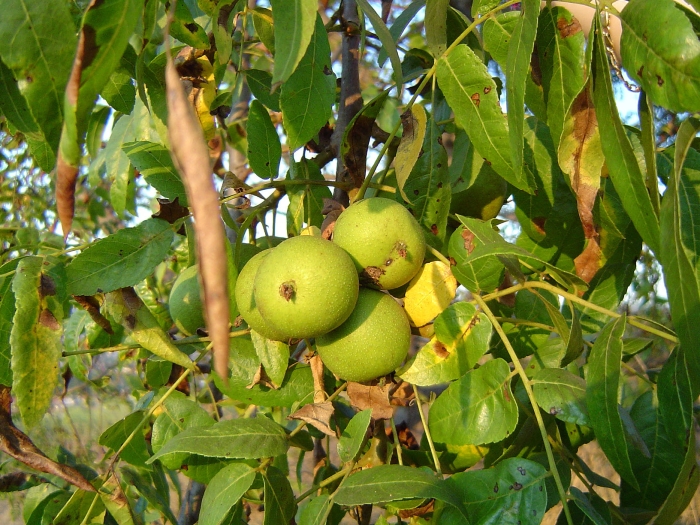Southern California Walnut
(Juglans californica)
Southern California Walnut (Juglans californica)
/
/

The Geographer Wikipedia.
CC BY 2.5
Image By:
The Geographer Wikipedia.
Recorded By:
Copyright:
CC BY 2.5
Copyright Notice:
Photo by: The Geographer Wikipedia. | License Type: CC BY 2.5 | License URL: https://creativecommons.org/licenses/by/2.5 | Uploader: Animalparty | Publisher: Wikimedia Commons | Title: California_Blackwalnut.jpg | Notes: |




















































Estimated Native Range
Summary
Juglans californica, commonly known as Southern California Walnut or Southern California Black Walnut, is a deciduous shrub or small tree native to the chaparral and woodlands of South Central and Southern California. It typically grows to a height and width of 15-30 feet, with a habit of forming multiple trunks or a single trunk that may fork near the ground, giving the appearance of conjoined trees. The bark is thick and becomes deeply furrowed with age. The foliage consists of large, pinnately compound leaves with 11–19 lanceolate leaflets featuring toothed margins; the leaflets are smooth in the vein angles. This species produces a small, hard nut encased in a thick, shallowly grooved shell that is notoriously difficult to crack open.
The Southern California Walnut is valued for its drought tolerance and ability to thrive in native plant gardens, xeriscapes, and wildlife habitats. It provides food and shelter for local fauna and is often used in natural landscaping projects. It is best suited to full sun or partial shade and prefers soils with slow drainage. While it requires low amounts of water once established, it benefits from occasional deep watering during prolonged dry periods. This walnut species is less commonly used for nut production due to the difficulty in shell removal, but it is appreciated for its ornamental qualities and contribution to biodiversity. Gardeners should be aware that the roots can be expansive and may interfere with nearby structures or pavements.CC BY-SA 4.0
The Southern California Walnut is valued for its drought tolerance and ability to thrive in native plant gardens, xeriscapes, and wildlife habitats. It provides food and shelter for local fauna and is often used in natural landscaping projects. It is best suited to full sun or partial shade and prefers soils with slow drainage. While it requires low amounts of water once established, it benefits from occasional deep watering during prolonged dry periods. This walnut species is less commonly used for nut production due to the difficulty in shell removal, but it is appreciated for its ornamental qualities and contribution to biodiversity. Gardeners should be aware that the roots can be expansive and may interfere with nearby structures or pavements.CC BY-SA 4.0
Plant Description
- Plant Type: Tree
- Height: 15-30 feet
- Width: 15-30 feet
- Growth Rate: Moderate
- Flower Color: N/A
- Flowering Season: Spring
- Leaf Retention: Deciduous
Growth Requirements
- Sun: Full Sun, Part Shade
- Water: Low
- Drainage: Slow
Common Uses
Bee Garden, Bird Garden, Butterfly Garden, Deer Resistant, Edible*Disclaimer: Easyscape's listed plant edibility is for informational use. Always verify the safety and proper identification of any plant before consumption., Fragrant, Low Maintenance
Natural Habitat
Native to chaparral and woodlands of South Central and Southern California
Other Names
Common Names: Southern California Black Walnut
Scientific Names: Juglans californica , Juglans californica var. californica , Canarium californicum
GBIF Accepted Name: Juglans californica S.Watson